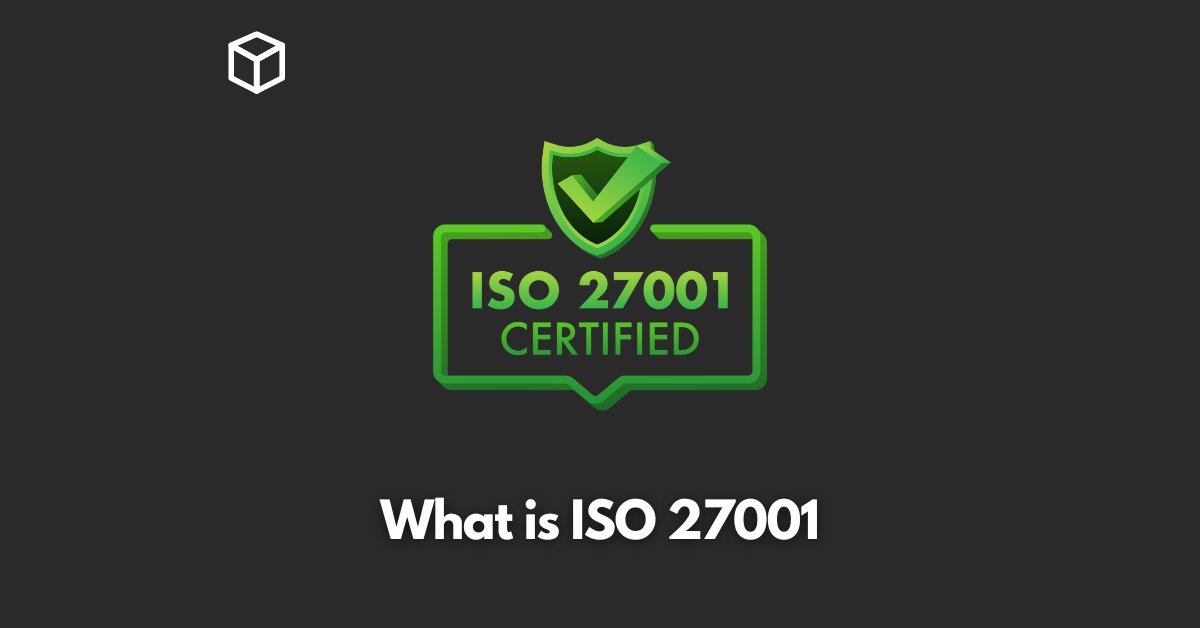ISO 27001 is an international standard that outlines a framework for managing sensitive information and establishing a system of controls to protect that information from unauthorized access, use, disclosure, disruption, modification, or destruction.
ISO 27001 is a widely recognized standard for information security management.
It provides a systematic approach for managing sensitive information, such as personal data, financial information, and confidential business information.
Organizations that implement ISO 27001 can benefit from improved security, increased efficiency, and reduced risk of data breaches.
As the world becomes increasingly digital, it’s more important than ever for organizations to ensure the security of their sensitive information.
In this article, we’ll discuss what ISO 27001 is, its requirements and benefits, and how to implement and maintain compliance with the standard.
Understanding the Information Security Management System (ISMS)
The core of ISO 27001 is the Information Security Management System (ISMS).
The ISMS is a systematic approach to managing sensitive information, including the identification of security risks, the implementation of controls to address those risks, and ongoing monitoring to ensure that the controls remain effective.
The ISMS includes several key components:
- Statement of Applicability: This document identifies the specific requirements of ISO 27001 that are relevant to the organization and the controls that will be implemented to meet those requirements.
- Risk Assessment: Organizations must conduct regular risk assessments to identify potential threats to the security of their sensitive information.
- Security Controls: Based on the results of the risk assessment, organizations must implement a set of security controls to address identified risks. These controls may include technical measures, such as encryption and firewalls, as well as organizational measures, such as employee training and incident response procedures.
The ISMS also includes an ongoing cycle of review and improvement, which helps organizations to ensure that the controls are effective and to identify and address any new risks that may arise.
Implementing ISO 27001 in your organization
Implementing ISO 27001 can be a complex process, but with the right approach, it can be done successfully.
Here are the key steps to take when implementing ISO 27001 in your organization:
- Conduct a gap analysis: This process involves comparing your current information security practices with the requirements of ISO 27001. This will help you to identify areas where your current practices fall short and where you need to improve.
- Document processes and procedures: To meet the requirements of ISO 27001, you’ll need to document your information security policies and procedures. This includes creating or updating your information security manual, which outlines the specific controls that you’ll be implementing.
- Train employees: Your employees are your first line of defense when it comes to protecting sensitive information. It’s essential that they understand the requirements of ISO 27001 and how to comply with them.
- Undergo an internal audit and certification process: After you’ve implemented the necessary controls, you’ll need to undergo an internal audit to ensure that you’re meeting the requirements of ISO 27001. Once you’ve passed the internal audit, you can begin the certification process to become officially certified to the standard.
While implementing ISO 27001, organizations may face some common challenges such as lack of resources, resistance from employees and lack of understanding of the standard.
It’s important to have a thorough plan, communicate effectively and provide necessary resources to overcome these challenges.
Maintaining Compliance with ISO 27001
Once you’ve achieved certification, the work isn’t done. ISO 27001 requires ongoing maintenance to ensure that your ISMS remains effective. This includes:
- Conducting regular reviews and audits: Organizations must conduct regular internal audits to ensure that their ISMS is still effective and to meet the requirements of ISO 27001. This includes assessing the effectiveness of the controls that were implemented and identifying any new risks that may have arisen.
- Updating policies and procedures: As the business environment changes and new threats to information security emerge, organizations must update their policies and procedures to reflect these changes.
- Training employees on new or updated controls: Employees must be trained on any new or updated controls that are implemented as part of the ISMS. This ensures that they are aware of their roles and responsibilities when it comes to protecting sensitive information.
Maintaining compliance with ISO 27001 requires ongoing effort, but the benefits of having a robust information security management system in place far outweigh the costs of maintaining it.
Conclusion
ISO 27001 is a widely recognized standard for information security management, providing a systematic approach for managing sensitive information, such as personal data, financial information, and confidential business information.
Organizations that implement ISO 27001 can benefit from improved security, increased efficiency, and reduced risk of data breaches.
The ISMS includes several key components such as statement of applicability, risk assessment, and security controls.
Implementing ISO 27001 can be a complex process, but with the right approach, it can be done successfully.
Organizations should also be prepared for ongoing maintenance to ensure ongoing compliance.
In today’s digital age, protecting sensitive information is more important than ever.
Organizations should consider implementing ISO 27001 to ensure the security of their sensitive information and to comply with relevant regulations and standards.




